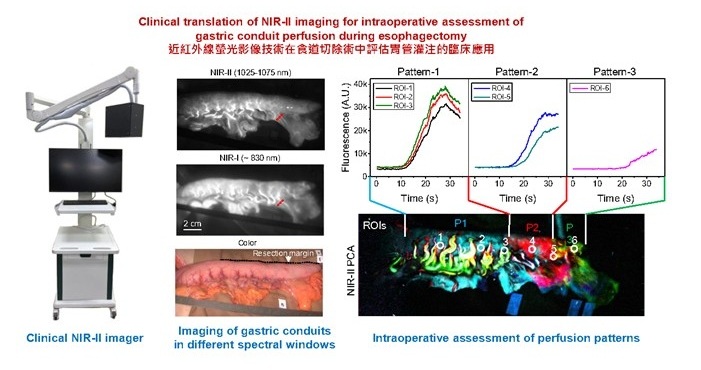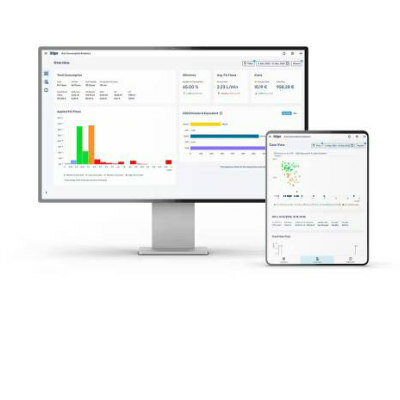New Report Shows Worldwide Life Expectancy Increased by Five Years
|
By HospiMedica International staff writers Posted on 07 Jun 2016 |

Image: A new report shows that global life expectancy increased by five years between 2000 and 2015 (Photo courtesy of the World Health Organization).
Life expectancy increased by five years between 2000 and 2015, the fastest increase since the 1960s, according to a new report.
The 2016 World Health Organization (WHO, Geneva, Switzerland) World Health Statistics found that the global life expectancy for children born in 2015 was 71.4 years (73.8 years for females and 69.1 years for males), but an individual child’s outlook depends on where he or she is born. Newborns in 29 countries--all of them high income-- have an average life expectancy of 80 years or more, while newborns in 22 others--all of them in sub-Saharan Africa--have life expectancy of less than 60 years.
With an average lifespan of 86.8 years, women in Japan can expect to live the longest, while Switzerland enjoys the longest average survival for men, at 81.3 years. People in Sierra Leone have the world’s lowest life expectancy for both sexes: 50.8 years for women and 49.3 years for men. Healthy life expectancy, a measure of the number of years of good health that a newborn in 2015 can expect, stands at 63.1 years globally (64.6 years for females and 61.5 years for males).
According to the report, the gains reverse declines during the 1990s, when life expectancy fell in Africa because of the AIDS epidemic and in Eastern Europe following the collapse of the Soviet Union. The increase was greatest in Africa, where life expectancy increased by 9.4 years to 60 years, driven mainly by improvements in child survival, progress in malaria control, and expanded access to anti-retrovirals for treatment of HIV.
“The world has made great strides in reducing the needless suffering and premature deaths that arise from preventable and treatable diseases,” said Dr. Margaret Chan, director-general of WHO. “But the gains have been uneven. Supporting countries to move towards universal health coverage based on strong primary care is the best thing we can do to make sure no-one is left behind.”
The annual World Health Statistics report contains data from 194 countries on the health-related targets within the Sustainable Development Goals (SDGs), adopted by the United Nations General Assembly in September 2015. The report highlights significant data gaps that will need to be filled in order to reliably track progress. For example, an estimated 53% of deaths globally aren’t registered, although several countries, including Brazil, China, the Islamic Republic of Iran, South Africa, and Turkey, have made considerable progress in that area.
Related Links:
World Health Organization
The 2016 World Health Organization (WHO, Geneva, Switzerland) World Health Statistics found that the global life expectancy for children born in 2015 was 71.4 years (73.8 years for females and 69.1 years for males), but an individual child’s outlook depends on where he or she is born. Newborns in 29 countries--all of them high income-- have an average life expectancy of 80 years or more, while newborns in 22 others--all of them in sub-Saharan Africa--have life expectancy of less than 60 years.
With an average lifespan of 86.8 years, women in Japan can expect to live the longest, while Switzerland enjoys the longest average survival for men, at 81.3 years. People in Sierra Leone have the world’s lowest life expectancy for both sexes: 50.8 years for women and 49.3 years for men. Healthy life expectancy, a measure of the number of years of good health that a newborn in 2015 can expect, stands at 63.1 years globally (64.6 years for females and 61.5 years for males).
According to the report, the gains reverse declines during the 1990s, when life expectancy fell in Africa because of the AIDS epidemic and in Eastern Europe following the collapse of the Soviet Union. The increase was greatest in Africa, where life expectancy increased by 9.4 years to 60 years, driven mainly by improvements in child survival, progress in malaria control, and expanded access to anti-retrovirals for treatment of HIV.
“The world has made great strides in reducing the needless suffering and premature deaths that arise from preventable and treatable diseases,” said Dr. Margaret Chan, director-general of WHO. “But the gains have been uneven. Supporting countries to move towards universal health coverage based on strong primary care is the best thing we can do to make sure no-one is left behind.”
The annual World Health Statistics report contains data from 194 countries on the health-related targets within the Sustainable Development Goals (SDGs), adopted by the United Nations General Assembly in September 2015. The report highlights significant data gaps that will need to be filled in order to reliably track progress. For example, an estimated 53% of deaths globally aren’t registered, although several countries, including Brazil, China, the Islamic Republic of Iran, South Africa, and Turkey, have made considerable progress in that area.
Related Links:
World Health Organization
Latest Critical Care News
- AI-Enhanced Wearables Could Transform Type 2 Diabetes and Prediabetes Care
- Breathable Electronic Skin Paves Way for Next-Generation Wearable Devices
- AI Transforming Colon Cancer Diagnosis
- Ventricular Assist Device Offers Long-Term Use in Children Waiting for Donor Heart
- Precision Approach Improves Immunotherapy Effectiveness for ICU Patients with Sepsis
- Soft Robots Could Donate Their Heart to Humans
- Bioadhesive Strategy Prevents Fibrosis Around Device Implants on Peripheral Nerves
- Miniature Non-Invasive Robotic Catheters to Improve Infertility Treatments
- Stick-On Patch Monitors Baby's Movements In Utero
- EEG-Based AI Technology Accurately Diagnoses Alzheimer’s and Dementia
- Robot Lymphatic System Paves Way for Self-Powered Wearables and Machines
- Focused Ultrasound Technique Successfully Treats Pediatric Brain Cancer
- Nasal Drops Fight Brain Tumors Noninvasively
- AI Helps Optimize Therapy Selection and Dosing for Septic Shock
- Glowing Bacteria ‘Pills’ for Detecting Gut Diseases Could Eliminate Colonoscopies
- Skin-Permeable Polymer Patch Delivers Insulin Non-Invasively Through Skin
Channels
Surgical Techniques
view channel
3D-Printed Blood Vessel Scaffolds Could Transform Heart Bypass Surgeries
A tiny, opaque tube held up in a lab may look unremarkable at first glance, but its microscopic surface features could mark a meaningful step forward in heart bypass surgery. Measuring just about one centimeter... Read more
Novel Imaging Technique Helps View Blood Perfusion During Esophageal Surgery
Esophagectomy is a complex and high-risk surgery often required for esophageal cancer, with anastomotic leakage remaining one of its most serious complications. This defect at the surgical suture line... Read more
Minimally Invasive Surgery Proven Safe and Effective for Complex ‘Whipple’ Procedure
Tumors of the pancreatic head often require a highly complex operation known as pancreatoduodenectomy or the Whipple procedure. This surgery involves removing multiple structures and creating several internal... Read more
Catheter-Based Procedures Offer Less Invasive Option for Treatment of Valvular Disease
Valvular heart disease, caused by tight or leaky valves between heart chambers, affects up to 10% of older adults and leads to more than 120,000 deaths globally each year. Traditional open-heart surgery... Read morePatient Care
view channel
Revolutionary Automatic IV-Line Flushing Device to Enhance Infusion Care
More than 80% of in-hospital patients receive intravenous (IV) therapy. Every dose of IV medicine delivered in a small volume (<250 mL) infusion bag should be followed by subsequent flushing to ensure... Read more
VR Training Tool Combats Contamination of Portable Medical Equipment
Healthcare-associated infections (HAIs) impact one in every 31 patients, cause nearly 100,000 deaths each year, and cost USD 28.4 billion in direct medical expenses. Notably, up to 75% of these infections... Read more
Portable Biosensor Platform to Reduce Hospital-Acquired Infections
Approximately 4 million patients in the European Union acquire healthcare-associated infections (HAIs) or nosocomial infections each year, with around 37,000 deaths directly resulting from these infections,... Read moreFirst-Of-Its-Kind Portable Germicidal Light Technology Disinfects High-Touch Clinical Surfaces in Seconds
Reducing healthcare-acquired infections (HAIs) remains a pressing issue within global healthcare systems. In the United States alone, 1.7 million patients contract HAIs annually, leading to approximately... Read moreHealth IT
view channel
EMR-Based Tool Predicts Graft Failure After Kidney Transplant
Kidney transplantation offers patients with end-stage kidney disease longer survival and better quality of life than dialysis, yet graft failure remains a major challenge. Although a successful transplant... Read more
Printable Molecule-Selective Nanoparticles Enable Mass Production of Wearable Biosensors
The future of medicine is likely to focus on the personalization of healthcare—understanding exactly what an individual requires and delivering the appropriate combination of nutrients, metabolites, and... Read moreBusiness
view channel
Philips and Masimo Partner to Advance Patient Monitoring Measurement Technologies
Royal Philips (Amsterdam, Netherlands) and Masimo (Irvine, California, USA) have renewed their multi-year strategic collaboration, combining Philips’ expertise in patient monitoring with Masimo’s noninvasive... Read more
B. Braun Acquires Digital Microsurgery Company True Digital Surgery
The high-end microsurgery market in neurosurgery, spine, and ENT is undergoing a significant transformation. Traditional analog microscopes are giving way to digital exoscopes, which provide improved visualization,... Read more
CMEF 2025 to Promote Holistic and High-Quality Development of Medical and Health Industry
The 92nd China International Medical Equipment Fair (CMEF 2025) Autumn Exhibition is scheduled to be held from September 26 to 29 at the China Import and Export Fair Complex (Canton Fair Complex) in Guangzhou.... Read more












